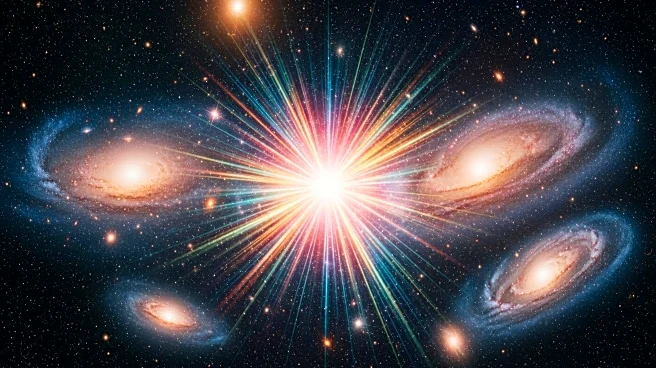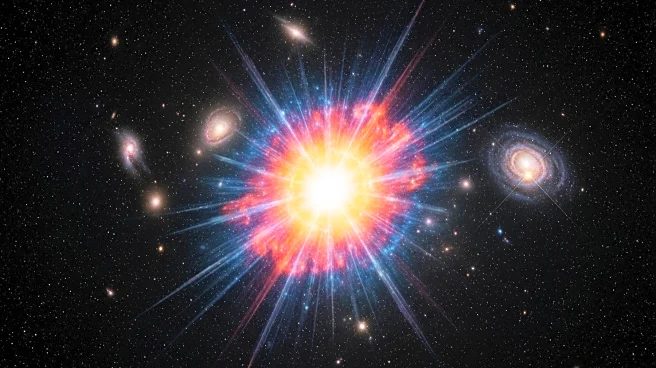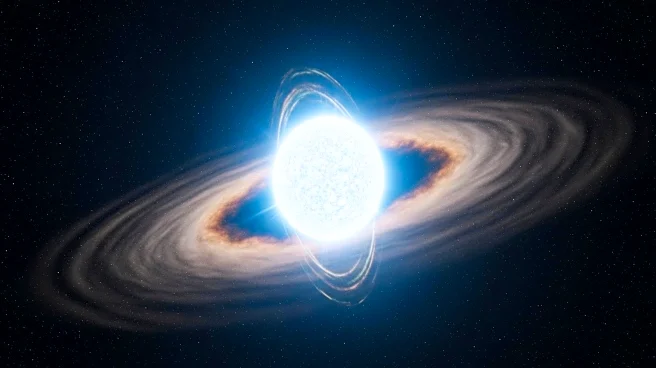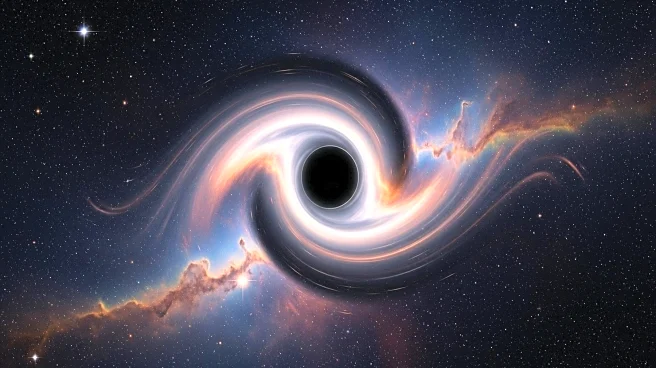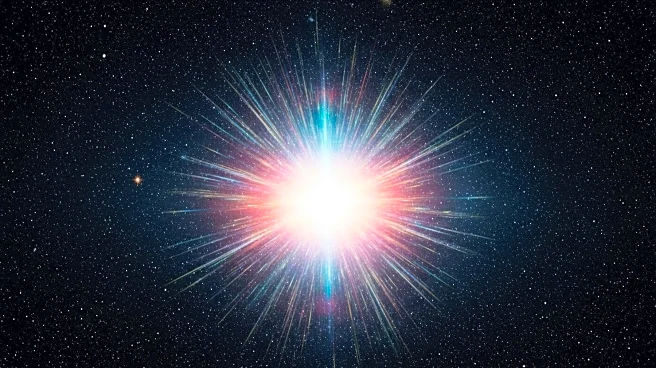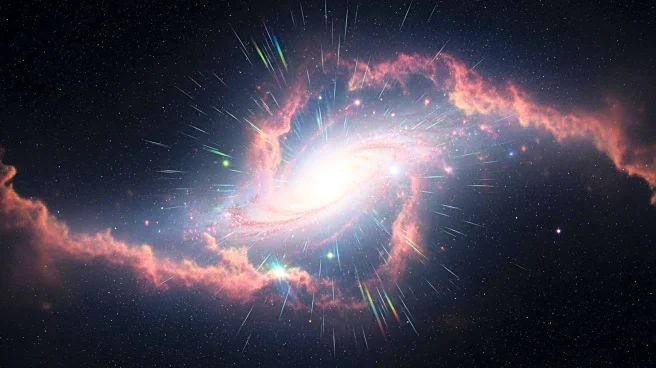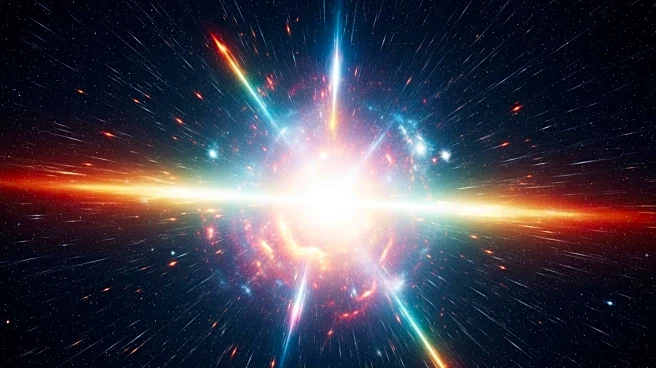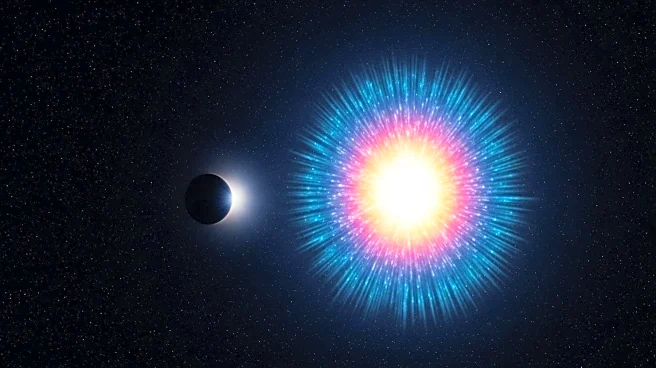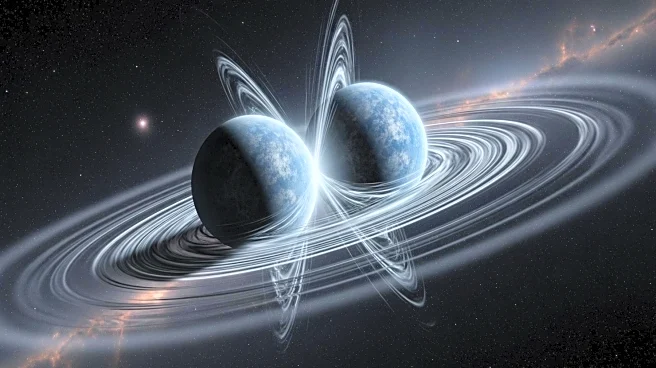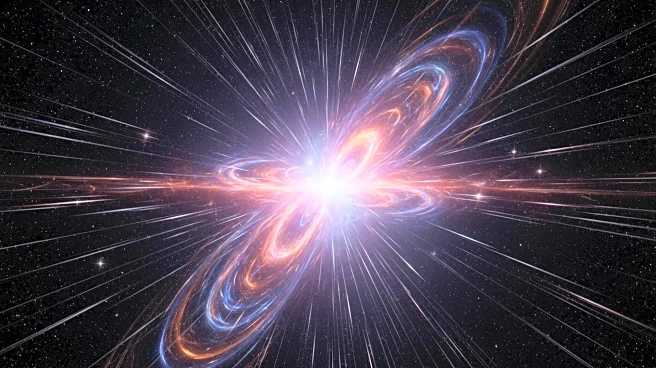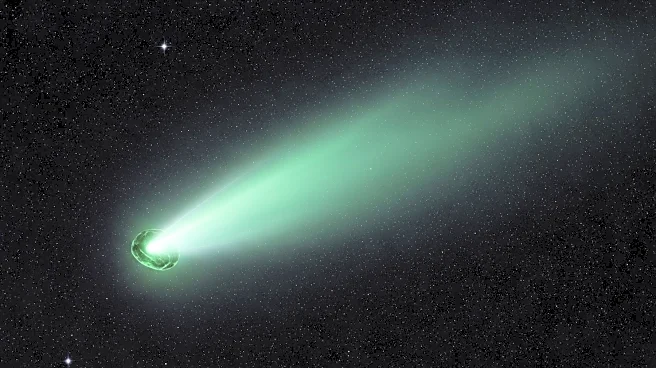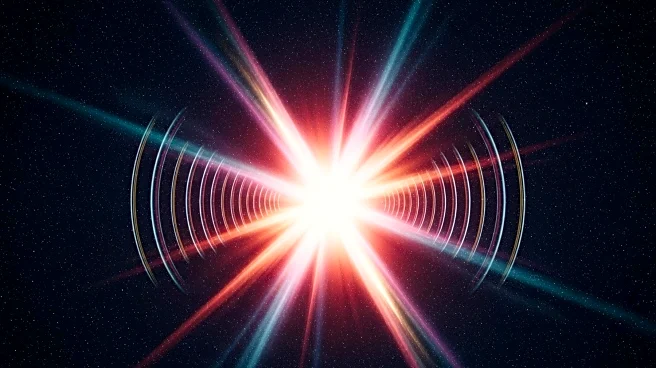What is the story about?
What's Happening?
Astronomers have identified a gamma-ray burst (GRB) named GRB 250702B that defies current scientific understanding of such cosmic phenomena. Unlike typical GRBs, which are brief and singular events, GRB 250702B exhibited multiple bursts over the course of a day, a behavior not observed in the past 50 years of GRB studies. This discovery, published in The Astrophysical Journal Letters, has sparked significant interest in the scientific community as it challenges existing models of high-energy cosmic explosions. The GRB was detected by the Fermi Gamma-ray Space Telescope, which recorded several bursts from the same source over several hours, indicating an unusual and prolonged activity.
Why It's Important?
The discovery of GRB 250702B is significant as it could lead to a reevaluation of current theories regarding gamma-ray bursts, which are among the most energetic events in the universe. Traditionally, GRBs are understood to result from catastrophic events such as the collapse of massive stars or the collision of neutron stars, leading to the formation of black holes. The prolonged and repetitive nature of GRB 250702B suggests a different mechanism may be at play, potentially offering new insights into the life cycles of stars and the formation of black holes. This could have broader implications for our understanding of the universe and the fundamental processes that govern it.
What's Next?
Researchers are continuing to monitor GRB 250702B to gather more data and refine their understanding of its origins. The use of advanced telescopes, such as the European Southern Observatory's Very Large Telescope, is aiding in pinpointing the exact location and nature of the GRB. This ongoing research may eventually lead to the development of new models that better explain the behavior of such cosmic events. The scientific community is keenly observing these developments, as they could potentially reshape our understanding of high-energy astrophysical phenomena.
Beyond the Headlines
The unusual characteristics of GRB 250702B highlight the limitations of current astronomical models and the need for continuous exploration and adaptation in the field of astrophysics. This discovery underscores the importance of technological advancements in telescopes and space observatories, which enable scientists to observe and analyze phenomena that were previously beyond our reach. It also raises questions about the potential existence of other unknown cosmic events that could further challenge our understanding of the universe.
AI Generated Content
Do you find this article useful?
